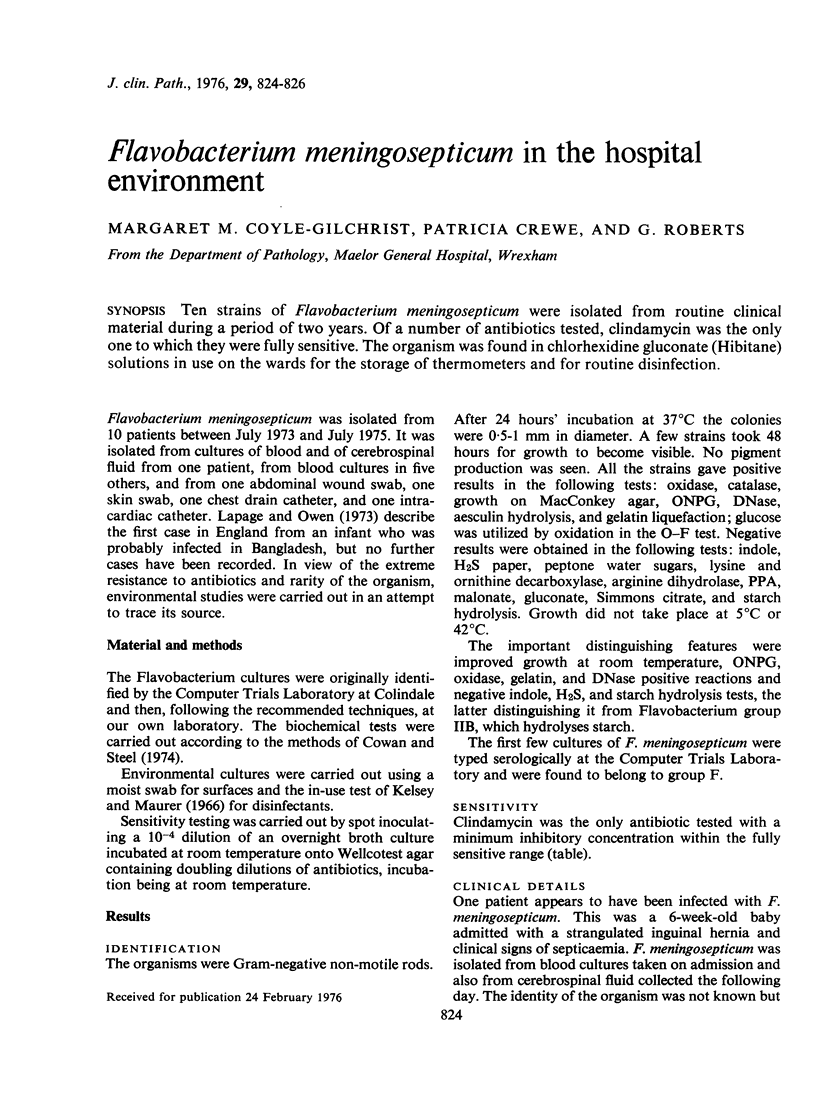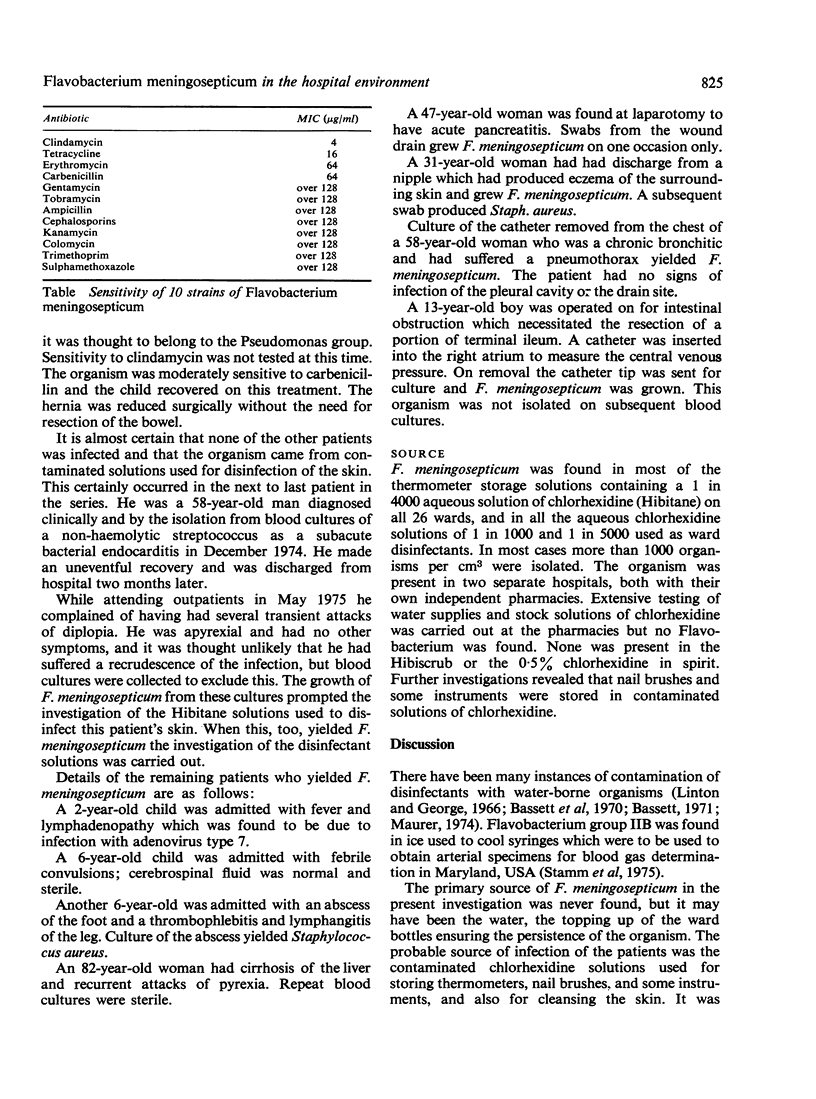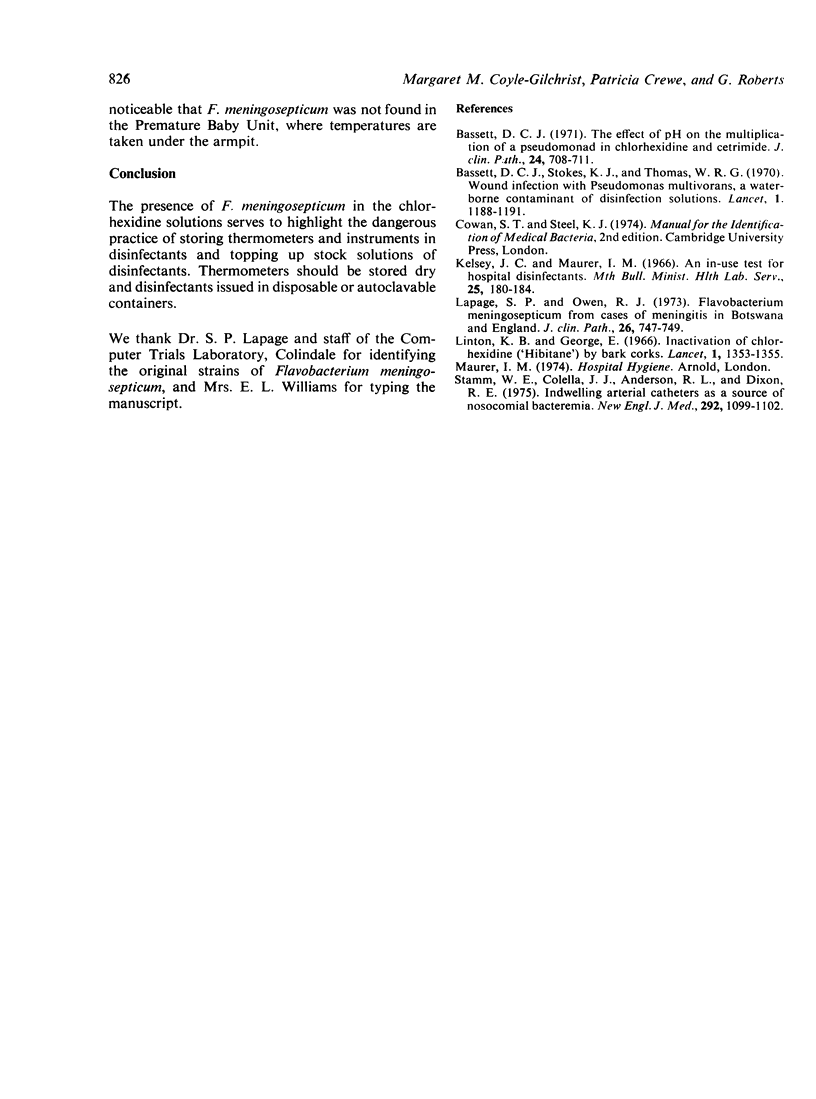Abstract
Ten strains of Flavobacterium meningosepticum were isolated from routine clinical material during a period of two years. Of a number of antibiotics tested, clindamycin was the only one to which they were fully sensitive. The organism was found in chlorhexidine gluconate (Hibitane) solutions in use on the wards for the storage of thermometers and for routine disinfection.
Full text
PDF


Selected References
These references are in PubMed. This may not be the complete list of references from this article.
- Bassett D. C., Stokes K. J., Thomas W. R. Wound infection with Pseudomonas multivorans. A water-borne contaminant of disinfectant solutions. Lancet. 1970 Jun 6;1(7658):1188–1191. doi: 10.1016/s0140-6736(70)91783-6. [DOI] [PubMed] [Google Scholar]
- Bassett D. C. The effect of pH on the multiplication of a pseudomonad in chlorhexidine and cetrimide. J Clin Pathol. 1971 Nov;24(8):708–711. doi: 10.1136/jcp.24.8.708. [DOI] [PMC free article] [PubMed] [Google Scholar]
- Lapage S. P., Owen R. J. Flavobacterium meningosepticum from cases of meningitis in Botswana and England. J Clin Pathol. 1973 Oct;26(10):747–749. doi: 10.1136/jcp.26.10.747. [DOI] [PMC free article] [PubMed] [Google Scholar]
- Linton K. B., George E. Inactivation of chlorhexidine ("hibitane") by bark corks. Lancet. 1966 Jun 18;1(7451):1353–1355. doi: 10.1016/s0140-6736(66)92141-6. [DOI] [PubMed] [Google Scholar]
- Stamm W. E., Colella J. J., Anderson R. L., Dixon R. E. Indwelling arterial catheters as a source of nosocomial bacteremia. An outbreak caused by Flavobacterium Species. N Engl J Med. 1975 May 22;292(21):1099–1102. doi: 10.1056/NEJM197505222922105. [DOI] [PubMed] [Google Scholar]


